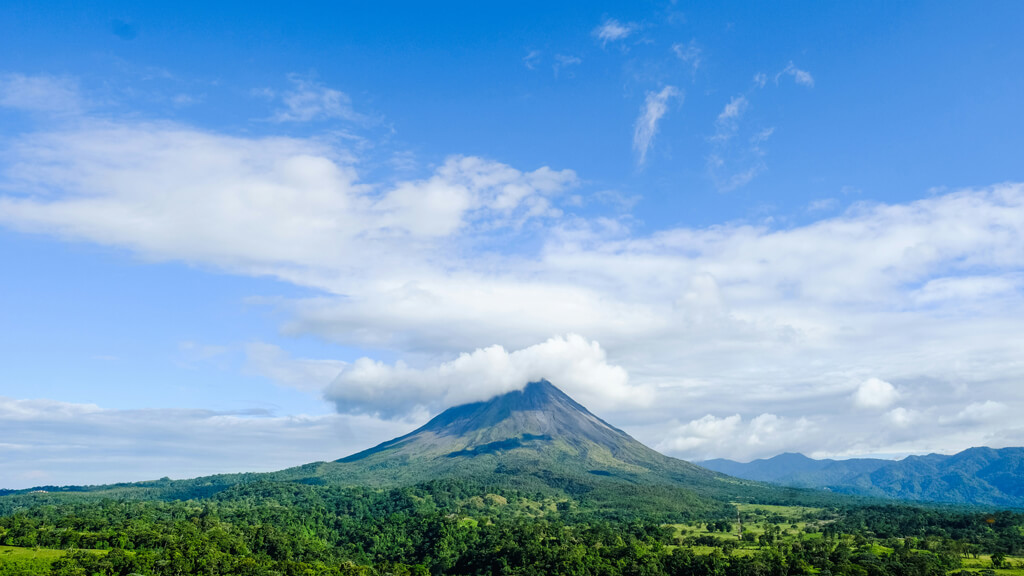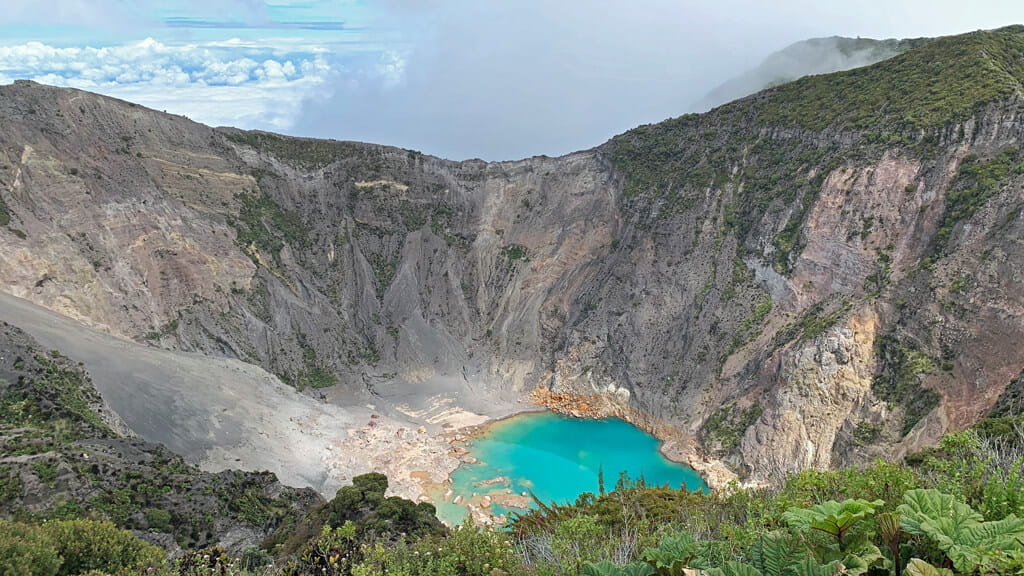Discover Costa Rica's Volcanoes
Introduction
Costa Rica, known for its stunning beaches and rich biodiversity, is also home to a remarkable array of volcanoes that shape the country’s landscape and culture. From towering active giants to tranquil, extinct peaks, Costa Rica’s volcanoes offer a glimpse into the Earth’s powerful forces. For adventure seekers, nature lovers, and curious travelers, exploring these volcanoes is a must when visiting this Central American paradise. In this article, we’ll take you on a journey through Costa Rica’s most fascinating volcanoes, uncovering their history, significance, and the unique experiences they offer.

The Role of Volcanoes in Costa Rica’s Formation
Costa Rica’s volcanic activity is the result of tectonic movements, specifically the subduction of the Cocos Plate beneath the Caribbean Plate. This geological process has shaped the country’s rugged terrain and contributed to its rich biodiversity. The fertile volcanic soils support lush rainforests, coffee plantations, and diverse ecosystems that are teeming with life. Without these ancient eruptions, Costa Rica’s landscape and natural beauty would be drastically different.
Arenal Volcano: The Iconic Giant
One of the most famous volcanoes in Costa Rica, Arenal was, until recently, one of the most active volcanoes in the world. Located in the northern region of the country, Arenal’s perfect conical shape dominates the landscape. After a major eruption in 1968, Arenal remained highly active for decades, drawing visitors eager to witness its fiery displays. Today, Arenal is in a resting phase, but the surrounding area remains a hotspot for adventure. Whether you’re soaking in the geothermal hot springs, hiking through the Arenal Volcano National Park, or ziplining through the forest canopy, Arenal offers endless activities for thrill-seekers.
Poás Volcano: A Crater Like No Other
Poás Volcano, located in central Costa Rica, is known for its massive crater, which is one of the largest in the world. The striking turquoise lake at its center is highly acidic and often emits clouds of steam and gases, creating a dramatic scene. Poás is one of Costa Rica’s most accessible volcanoes, with well-maintained paths leading right to the edge of the crater. However, due to its activity, the park sometimes closes for safety reasons, so it’s important to check conditions before planning your visit. When the park is open, Poás offers a rare opportunity to witness an active crater up close.
Rincón de la Vieja: Adventure Awaits
Rincón de la Vieja, located in the Guanacaste region, is an adventurer’s paradise. This active volcano, with its bubbling mud pots, steaming fumaroles, and hot springs, offers a raw and untamed glimpse into geothermal activity. The national park surrounding Rincón de la Vieja is a haven for outdoor enthusiasts, with hiking trails that lead to waterfalls, natural hot springs, and stunning viewpoints. Wildlife is abundant here, and visitors may spot everything from capuchin monkeys to colorful toucans. For those seeking adventure, Rincón de la Vieja doesn’t disappoint.

Irazú Volcano: Costa Rica’s Highest Peak
Standing at 11,260 feet (3,432 meters), Irazú Volcano is the highest volcano in Costa Rica. Located near the city of Cartago, Irazú offers panoramic views that, on clear days, allow you to see both the Pacific and Atlantic Oceans. Irazú’s last major eruption was in the 1960s, and today, the volcano is considered dormant. The Irazú Volcano National Park is easily accessible, and visitors can drive almost to the summit, making it a great day trip from San José. The stark, lunar-like landscape of the crater contrasts sharply with the lush greenery surrounding it, creating a surreal experience.
Turrialba Volcano: A Smoky Spectacle
Turrialba, one of Costa Rica’s most active volcanoes, has seen increased activity in recent years. Located near Irazú, Turrialba’s eruptions have sent ash plumes high into the sky, affecting nearby communities and even reaching the capital, San José. Despite its activity, Turrialba is a captivating sight, especially from a safe distance. While the immediate area around Turrialba may be off-limits during periods of heightened activity, there are still many viewpoints and hiking opportunities in the region where you can safely observe the volcano’s smoky spectacle.
Tenorio Volcano: A Hidden Gem
Tenorio Volcano may not be as famous as Arenal or Poás, but it’s a hidden gem worth discovering. Located in the northern part of Costa Rica, Tenorio is part of the Tenorio Volcano National Park, which is home to one of the country’s most stunning natural wonders: Rio Celeste. This river, known for its vibrant turquoise color, gets its hue from the minerals in the volcanic soil. Hiking to Rio Celeste is a popular activity, and the trail offers plenty of opportunities to marvel at the natural beauty of the area. With fewer crowds than other popular volcanoes, Tenorio offers a more peaceful and secluded experience.
Volcanoes of the Guanacaste Mountain Range
The Guanacaste Mountain Range, in northwestern Costa Rica, is home to several volcanoes, including Orosí and Miravalles. These volcanoes are less frequently visited, but they offer unique experiences for those willing to venture off the beaten path. The region’s volcanic activity creates hot springs, fumaroles, and other geothermal features, making it a great spot for eco-tourism and adventure. The surrounding national parks, such as Rincón de la Vieja and Tenorio, also provide opportunities for hiking, wildlife viewing, and exploring volcanic landscapes.
Costa Rica’s Volcanic Hot Springs
Thanks to its geothermal activity, Costa Rica is home to numerous natural hot springs, many of which are located near its volcanoes. The hot springs around Arenal Volcano are particularly famous, with resorts like Tabacón offering luxurious spa experiences in naturally heated waters. Other hot springs, such as those in Rincón de la Vieja and Miravalles, offer more rustic and less commercialized experiences. These hot springs are not only relaxing but also believed to have therapeutic properties, making them a perfect way to unwind after a day of exploring.

Volcanoes and Biodiversity
Volcanic soils are incredibly fertile, supporting a wide variety of plant life. This, in turn, attracts diverse wildlife, making volcanic regions some of the most biodiverse areas in Costa Rica. For example, the forests around Arenal and Rincón de la Vieja are teeming with life, from vibrant birds to elusive mammals. These ecosystems are vital for conservation, and many national parks centered around volcanoes play a crucial role in protecting Costa Rica’s natural heritage.
The Cultural Significance of Volcanoes in Costa Rica
Volcanoes hold cultural significance for Costa Rica’s indigenous peoples, who have long regarded them with a mixture of reverence and fear. Legends and myths often surround these powerful natural features, and even today, volcanoes influence local traditions and practices. Festivals, art, and folklore all reflect the deep connection between Costa Ricans and their volcanoes. Visiting these sites offers not just a glimpse into geological wonders but also into the cultural tapestry that surrounds them.
Safety Tips for Visiting Volcanoes
Visiting a volcano can be an awe-inspiring experience, but it’s essential to be aware of the risks. Always check the current activity level of the volcano you plan to visit and follow any advisories or closures. Bring appropriate gear, including sturdy shoes, water, and sun protection. If hiking, make sure to stay on marked trails, and if you’re venturing into active areas, consider hiring a guide. Understanding the risks and being prepared will ensure that your volcano visit is both safe and enjoyable.
Volcanoes and Costa Rica’s Economy
Volcanoes are not just natural attractions—they also play a significant role in Costa Rica’s economy. The fertile soils created by volcanic activity are ideal for agriculture, particularly for growing coffee, one of the country’s most important exports. Additionally, volcanoes are major tourist attractions, drawing visitors from around the world. This tourism generates income for local communities and funds conservation efforts. However, balancing economic benefits with environmental protection is an ongoing challenge that Costa Rica continues to navigate.
Best Time to Visit Costa Rica’s Volcanoes
While Costa Rica’s volcanoes can be visited year-round, the dry season (December to April) is generally the best time for clear views and comfortable hiking conditions. However, the wet season (May to November) brings lush greenery and fewer tourists, making it a great time to visit if you don’t mind a bit of rain. The choice of when to visit depends on your preferences, but no matter when you go, the volcanoes of Costa Rica promise unforgettable experiences.
Conclusion
Costa Rica’s volcanoes are more than just mountains—they are dynamic, living landscapes that offer adventure, beauty, and insight into the natural world. From the iconic Arenal to the hidden gem of Tenorio, each volcano has its own story and allure. Exploring these volcanic wonders is a journey into the heart of Costa Rica’s geological and cultural heritage. By respecting these powerful forces of nature and supporting conservation efforts, we can help ensure that they continue to inspire and amaze future generations.


